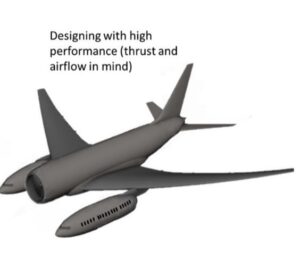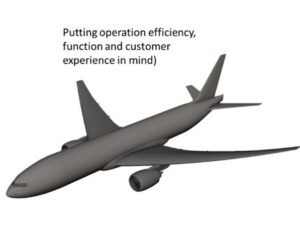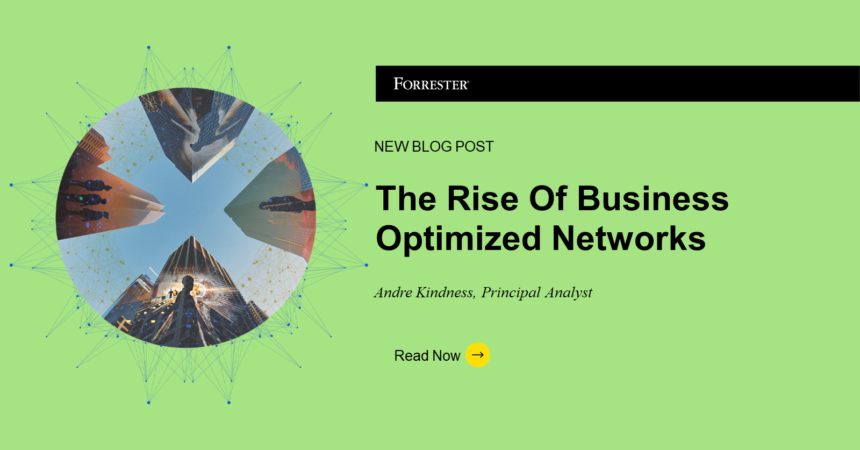In late 2015, Forrester introduced a new networking concept called business optimized network (BON). An idea that networks needed to be designed for the business you’re in. Among the Silicon Valley unicorns, this has been commonplace. However for classic Fortune 500 companies, this is just emerging.
You are probably saying, Andre don’t be a silly rabbit. Of course networks are optimized for our business. Many professionals might try to argue their unique networks were built around their type of business. It may seem they like they are, but they aren’t really. Hear me out.
Simply put – 1) networks evolved from its simple origin without strategic rethink, 2) we do what is easy 3) investments reflect the latest fad de jour when your team got budget, and 4) network geeks design based on technical strength not client outcomes. The result? Network snowflakes that don’t serve the customer and limit the success of your next major digital experience investments. In more detail:
- The origins of networks began with a simple goal but its morphed from there. Networks were initially designed to just connect PCs and back-end repositories together. When businesses started to use computer technology, the new technologies were pretty basic and generic. Personal computers, printers, spreadsheets, and word processing weren’t specific to a type of business. As technologies evolved, networks morphed rather than being fundamentally redesigned.
- Foundation design evolved from what was easy, not ideal. Because it was easy, networking professionals used datasheets as the method for choosing the components to build a network. Often teams procured components that had the biggest route tables, largest memory, most ports, biggest backplane, etc. Sometimes a vendor had special protocol that enabled a particular function which was needed for particular technology.
- Investments reflect various network fads when your team had budget, not strategic moves. New generic technologies emerged—WiFi, VoIP, and server virtualization – but adoption times varied based on budget availability timing and the latest fads. It didn’t reflect strategic investments nor did it align to real business outcomes. It was tactical and reactionary. No planning was put into changes outside the networking organization. And whatever the networking market had available at the time, was what the networking team bought. This created technology snowflakes.
- Those in charge value different design ideals that don’t serve the business. Basically there wasn’t much oversight and network teams were left on their own to build networks around specifications they thought were important and would in theory be the best for the customer or employee. Our network vendors developed their products with this same thinking – give customer more powerful systems. As ex-aerospace engineer, I like to apply this thinking to planes to show how flawed this approach is. What would an aircraft would look like if networking professional’s designed aircraft based on this method?
Here’s what a passenger plane would look like if networking professionals took their approach versus a normal passenger plane today that uses a product mindset with the customer in mind.


Now let’s talk business optimized networks or BON for short.
I saw a new trend started to emerge around the mid 2000 before I joined Forrester that started to change the way we fundamentally think about networks. I’m not saying that’s when it started – that’s I just when I personally noticed. At that time, Google approached some of the traditional network vendors and asked if the vendors would customize their firmware along with their hardware designs. They didn’t need the feature bloated firmware or big iron chassis that were available from Cisco and Foundry. The company needed something that was more refined to support their business. None of the vendors gave into Google’s request. Hence the rise of Google’s openflow approach, aka Google’s software defined networking flavor. Other cloud companies, Facebook and Amazon, started to build their own optimized for their business which was highlighted at various conferences, such as the Open Network Summit (ONS). These unicorns rose up and embraced business optimized networks (BON). But unlike cloud providers, the data center isn’t the competitive differentiator for most enterprises. As such, BON has remained off radar for traditional enterprises until recently.
Driving this change is the desire to radically deliver fantastic client experiences through the use of technology locally, where you serve your customers. Rather than differentiation at the data center, enterprises serve, retain, and get new customers in retail stores, acute care centers, airplanes, hotel lobbies, or manufacturing sites. To do this, companies need new business-optimized network approaches. CX leaders are taking these steps now – Sephora, Caeser’s Entertainment, Best Buy, Philips, Marriott – just to name a few.
Hence, I have started to see and talk with clients about:
- Considering form, fit, and function. Clients are looking for vendors that produce networking hardware that can withstand high amounts of vibration, heat, humidity, to name a few that can be put inside an aircraft, train, substation, and oil refineries. They ask about equipment that can be easily set up by field personnel, not a networking profession.
- Combining certain technologies for a given environment. Certain types of business use particular technology for a variety of reasons. There has been an exponential rise on managing multiple wireless technologies for a particular industry. Retailers are interested in WiFi, Bluetooth, NFC, and RFID. While manufacturers want to know which vendors support WiFi, Zigbee, WirelessHART, or other industrial specific wireless technologies.
- Specific architectures, designs, and operations for the location. Clients have been digging into IT and OT roles and responsibilities more and more. Other discussions have been coming up around modeling LAN, WAN, and WLAN for specifically retail location and the criteria needed to enhance a shoppers experience, such as connecting and locating a regular shopper before they enter the door.
If you’re feeling overwhelmed or concerned about the resources needed to make this shift. Take a breath. The shift toward optimizing the design for the business doesn’t mean fundamentals of networking change.
I’ll leave you with one final analogy. Auto manufacturers build different vehicles for different purposes – each composed with a lot of the same parts but those parts are adapted for its purpose. Think about a passenger vehicle. It has a standard set of major components: engine, drivetrain, braking, suspension, body, and directional control. How a company engineers these components and relates them to other subsystems corresponds directly to the market it wants to capture. For sports car enthusiasts, engineers design a vehicle with a more rigid suspension for cornering and put in a larger powertrain to enable quick acceleration. A truck has a body with a flatbed to carry items and needs larger springs to handle heavier weights. Outside passenger vehicles there is even greater variation based on the use case. Use this same logic.
You can address various business-centric requirements by developing a business optimized network (BON), taking an approach similar to that of automakers creating various models that cater to myriad customer tastes and needs.
Want to learn more? Forrester clients can view the full report, Let Business Outcomes Drive Network Design, here or request an inquiry with me, Andre here.








